Biophilia: An Introduction
By Husaini Sadikot—Guest Blogger
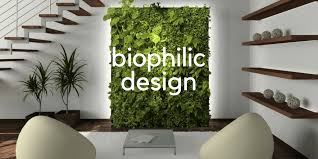
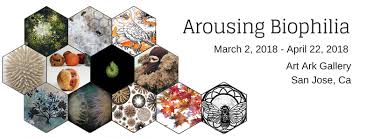 There are many reasons why there is and will be in the future a reduction of greenery such as plants and vegetation. One reason is, of course, the desire to make quick money and the profit motive like the cutting down of trees for wood for uses such as furniture, building and to make paper. Other reasons include the increasing population and in that population the increasing proportion of wealthy people. With an increasing population, more green vegetation will be removed for things like housing, roads, schools, hospitals, farms shopping centres and in general more city like living. With a greater proportion of rich people or increase in wealth, people will demand more living space per person which will lead to more and bigger housing etc. as they have in the wealthy countries of the world. There have been attempts to stop population growth, but one cannot stop people getting wealthier and in fact, one would hope that poverty in the world would decrease with people getting wealthier, particularly in poorer countries. Who would deny more living space for people living in crowded conditions?
There are many reasons why there is and will be in the future a reduction of greenery such as plants and vegetation. One reason is, of course, the desire to make quick money and the profit motive like the cutting down of trees for wood for uses such as furniture, building and to make paper. Other reasons include the increasing population and in that population the increasing proportion of wealthy people. With an increasing population, more green vegetation will be removed for things like housing, roads, schools, hospitals, farms shopping centres and in general more city like living. With a greater proportion of rich people or increase in wealth, people will demand more living space per person which will lead to more and bigger housing etc. as they have in the wealthy countries of the world. There have been attempts to stop population growth, but one cannot stop people getting wealthier and in fact, one would hope that poverty in the world would decrease with people getting wealthier, particularly in poorer countries. Who would deny more living space for people living in crowded conditions?
The link you sent me about the blue-green hospital in Singapore was interesting. It shows that even in a small, presumably crowded place like Singapore developers are prepared to adopt greenery and water in their hospital buildings. It also shows that existing blue-green features like the stormwater pond they used, can be used. features that can be used in developments, could reduce costs compared to new buildings. In some specific situations using existing plants or water scenes or features could be designed in such a way that viewing
and sensing benefits would be maximised (e.g. direction the building and its windows are in) and costly breaking down and clearing existing natural features would not be required or minimised. Further, use of local building materials and natural systems like native plants could also save money e.g fewer transportation costs. Plants, particularly wild native plants, for example, grow naturally in the local conditions so presumably many native plants would be able to thrive in the local conditions with minimum maintenance. The efficient use of presumably empty and unused spaces like rooftops and window ledges, to put in greenery in a horizontal and vertical way in the hospital is also interesting. As you may know, there are some plants which naturally grow vertically up affordable lattices and walls.


However the installation and maintenance of blue-green plants and water could increase hospital costs for the patient, and this could discourage building developers from adding new blue-green features, particularly in poorer countries. I read one of the comments which said that in India it was difficult to convince building developers to build blue-green features. Many areas of India may have a lot of sunlight, so solar power and possibly wind power might be possibly efficiently used and save money. However solar power is not possible when there is no sun and so could be a problem where 24-hour power is required. Hospitals may have emergency electricity generators, in case the electricity from the usual power sources is cut off. However solar power can be used for certain electrical functions such as lighting, cooking and hot water.I do not know if it is possible to store solar electric power like electric charge is stored when you charge some electric devices like mobile phones and computers. If solar electric power could be stored in this way, it could be used for 24 hours or longer. Currently, electric charge energy is stored in metallic (like lithium ion and nickel and cadmium)batteries that can be charged by electricity, though research is being done on supercapacitors which are electric devices that can store charge.
Together with the article were some links which I followed and found a long paper by a consulting firm Terrapin Bright Green. Also from them is another paper “The Economics of Biophilia”, why designing with nature in mind makes financial sense. To find this paper you can google “the economics of biophilia”. In this paper, they argue things like sensing of nature (seeing, hearing, smelling tasting and touching natural things like appropriate plants and animals) gives healthier-patients and therefore healthier profits and that sensing certain selected aspects of nature reduces staff absenteeism and improves productivity. The demand for hospitals in India is unclear, but blue-green sensing could also attract patients. Numbers and calculations from research are presented. In an effort to define what makes a good biophilic design, they have distilled research from a number of fields, including environmental psychology, endocrinology and neuroscience, to develop the 14 Patterns of Biophilic Design. These patterns serve as guidelines for applying blue-green biophilic design to both interior and exterior environments and are adaptable to many design projects.
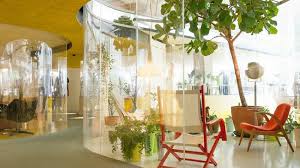
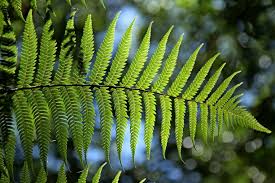
The practice of incorporating nature and natural elements into the built environment-known as biophilic design has been proven to measurably reduce stress, enhance cognitive brain function and creativity, and expedite healing. This translates into increased productivity, health care cost savings, and reduced staff turnover. The benefits of biophilic design have been shown by studies in psychology and neuroscience.
However not all interactions with nature provide restorative, stimulating experiences for humans; in fact, some nature interactions can even induce stress and fear responses.
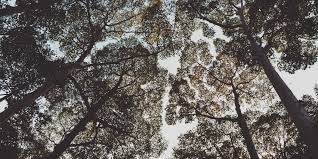
 Nature in the Space:
Nature in the Space:
• Visual connection with Nature
• Sensing of nature by sight. Aquariums, potted plants, shades of green on walls, views to gardens and distant landscapes and artwork of natural scenes all satisfy visual connection and do not have to be expensive.
Non-visual interactions with Nature
An interaction which stimulates senses other than sights like sound, smell, touch and taste. Research has shown, for example, that tree derived essential oils are associated with improved immune function, the scents of lavender, chamomile and sandalwood can have anxiety-reducing effects, and the scents of peppermint, jasmine, and rosemary improve alertness and cognitive brain function. It is possible to imagine spaces in the built environment where putting scent with these benefits would be most suitable. As far as taste is concerned, it can be noted that most of our food, either meat, fruit or vegetables come from nature.
Non-Rhythmic Sensory Stimuli :
Random unpredictable short-lived transitory connections with nature can reduce stress and improve productivity. A rhythm is generally predictable and continuous for a longer period of time, and if it is too simple and not accompanied by less predictable sensing of stimuli can be boring and stressful. Examples of natural non-rhythmic stimuli include birds chirping, shimmering water features, animals behaviour, long swaying grass and the on and off of the faint scent of eucalyptus in the air.
A biophilic intervention that leverages naturally occurring stimuli may need collaboration with the interior designer or horticulturist, while one that leverages simulated stimuli may necessitate early collaboration with the mechanical engineer or facilities team.
The Presence of Water
This biophilic design pattern has evolved from health and well-being benefits associated with access to water features, including reduced stress, lower heart rate and blood pressure, increased feelings of tranquillity, positive emotional responsiveness, improved concentration and perception and memory restoration. Wherever possible outdoor water features should be visible to building occupants to help ensure the greatest potential health outcome. A condition that enhances the experience of a place through seeing, hearing or touching water or nature, in general, could raise property values. In many cities in the world property prices are higher with water or nature views or features. Apparently, in many areas like city areas, people are prepared to pay more for blue-green plant and water views, though admittedly country areas with more plants usually have cheaper property values.
In the process of changing our ways, we should focus on the natural cleansing effects and the power of self-regeneration found within thick, foliated woodlands and learn to use these limited resources carefully under the guidance of the earth’s ecosystems.
Though it is troublesome to make biodegradable goods and to utilize natural energy in our present ways of life, it is not impossible. We have already developed sufficient technologies to effectively utilize Mother Nature while sustaining her unspoiled beauty, and now is the lime for the entire world to awaken to the limits of our materialistic ways and to change our society as a whole.” 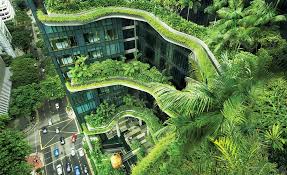

Nature of the Space :
Mystery
The feeling of excitement is exactly what the biophilic pattern of mystery replicates in our built environment. Instead of bringing elements of nature directly into the space (Nature of the Space), or mimicking or copying natural patterns, natural materials and natural forms (Natural Analogues), Nature in the Space patterns replicate enjoyable or exciting spatial conditions found in nature. Mystery condition has a palpable sense of anticipation or of being teased, offering the senses a kind of denial and reward that compels one to further investigate the Space. Stephen and Rachel Kaplan theorised that mystery, along with coherence, legibility and complexity in balance (not too much not too little), are the four factors that determine our preference for views.
Spatial qualities and planning strategies that reveal more information as users explore the space are particularly good at creating a Mystery condition. Where possible designers can use curved hallways, partially obscured artwork or movement, muffled sound, variable transparencies, peek-a-boo windows, and light and shadow. For example changes in light and shadow, sound sourcing, information content and activity over time, whether throughout a day or over years, can keep occupants engaged and curious.
Natural Analogue
Complexity and Order
Successful applications of Complexity and Order are perceived as being information rich and engaging, having achieved an intriguing balance between boring (familiar order) and overwhelming (too much complexity). Examples of complex structures from nature are abundant-our own nervous, pulmonary (of or relating of the lungs)and circulatory systems, as well as leaf capillaries, plant seed and leaf arrangements, tree branches and root systems and the many tributaries or branches that form a river delta. Mystery includes rich sensory information that adheres to a spatial hierarchy similar to those encountered in nature e.g irregular geometric structures forming a larger overall pattern, like in some carpets and wallpaper.
Thermal and Airflow Variability
Subtle changes in air temperature and pressure, relative humidity, airflow across the skin like the wind or a fan, and surface temperatures and pressures that mimic natural environments.
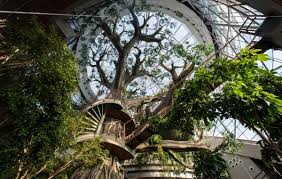
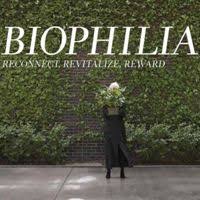
Nature in the Space
Dynamic and Diffuse Light
Leverages varying intensities of light and shadow that change over time to create conditions that occur in nature.
Connection With Natural Systems :
• Awareness of natural processes, especially seasonal and temporal changes characteristic of a healthy ecosystem.
• Natural Analogues
• Biomorphic Forms, Shapes and Patterns
Symbolic references to contoured, patterned, textured or numerical arrangements that persist in nature.Objects,materials,colours,shapes,sequences and patterns found in nature,manifest as artwork,ornamentation,furniture decor,and textiles in the built environment.Mimicry of shells and leaves, furniture with organic shapes and natural materials that have been processed or extensively altered (e.g wood planks, granite tabletops), each provide an indirect connection with nature, they are only analogous of materials in their natural state.The Fibonacci series for example (0,1,1,2,3,5,8,13,21,34….) is a numeric sequence that occurs in many living things, plants especially.The series is 0+1=1,1+1=2,2+1=3,3+2=5 and so on.Humans have been decorating living spaces with representations of nature since time immemorial, and architects have long created spaces using elements inspired by trees, bones, wings and seashells. As you can notice, nature abhors right angles and straight lines, which are rarely if ever, found in nature. This abhorrence creates packing and space problems in that most buildings and rooms in the building are rectangular, as rectangular creates the most efficient use of space and packing of rooms together with common walls. For example, if one tried to fit circles or ovals into any larger shape like a larger rectangle, circle or oval, there would be few common walls, and there would be wasted space. Biomorphic forms have been expressed for millennia like adorning temples with natural patterns to more modern examples. More intriguing is the architectural expression of mathematical proportions or arrangements that occur in nature. Many cultures have used natural mathematical relationships, like certain angles common in nature, in constructing buildings and sacred places.
Material Connection With Nature:
• Materials and elements from nature that, through minimal processing, reflect the local ecology or geology and create a distinct sense of place.
Nature of the Space :
Prospect
• An unimpeded view over a distance, for surveillance and planning. This includes our innate and learned desire to be able to see beyond our immediate surroundings.
Refuge
• A place for withdrawal from environmental conditions or the main flow of activity,in which the individual is protected from behind and overhead.
Risk/Peril :
An identifiable threat coupled with a reliable safeguard e.g something with phobia-inducing properties when it includes a trusted element of safety.
If you would like more information you can look up the paper “14 Patterns of Biophilic Design. For example in section 2.4 called Nature-Health Relationships, there is Table 1 which shows the health benefits of the 14 patterns on stress, clear thinking, mood, emotion and so on.
It should be pointed out that it just so happens that there are aspects of nature that are beautiful and calming and appealing to the senses (sight sound, smell, taste and touch)and can have benefits such as improved health. Other aspects of nature can be cruel and destructive, like death and certain weather and geological phenomena, like storms and earthquakes. There could be people made things which also have health financial and other benefits similar to or better than nature made things.
In human evolution, we have destroyed and deserted nature, created concrete city jungles and to some extent, this could be causing illnesses that are more common in technologically advanced societies. Science is basically the study of nature and lots of great art is inspired by natural things like flowers and other directly natural scenery.
Husaini Sadikot currently lives in Australia and has a Ph.D. in Chemistry from London University.
0 thoughts on “Biophilia: An Introduction”